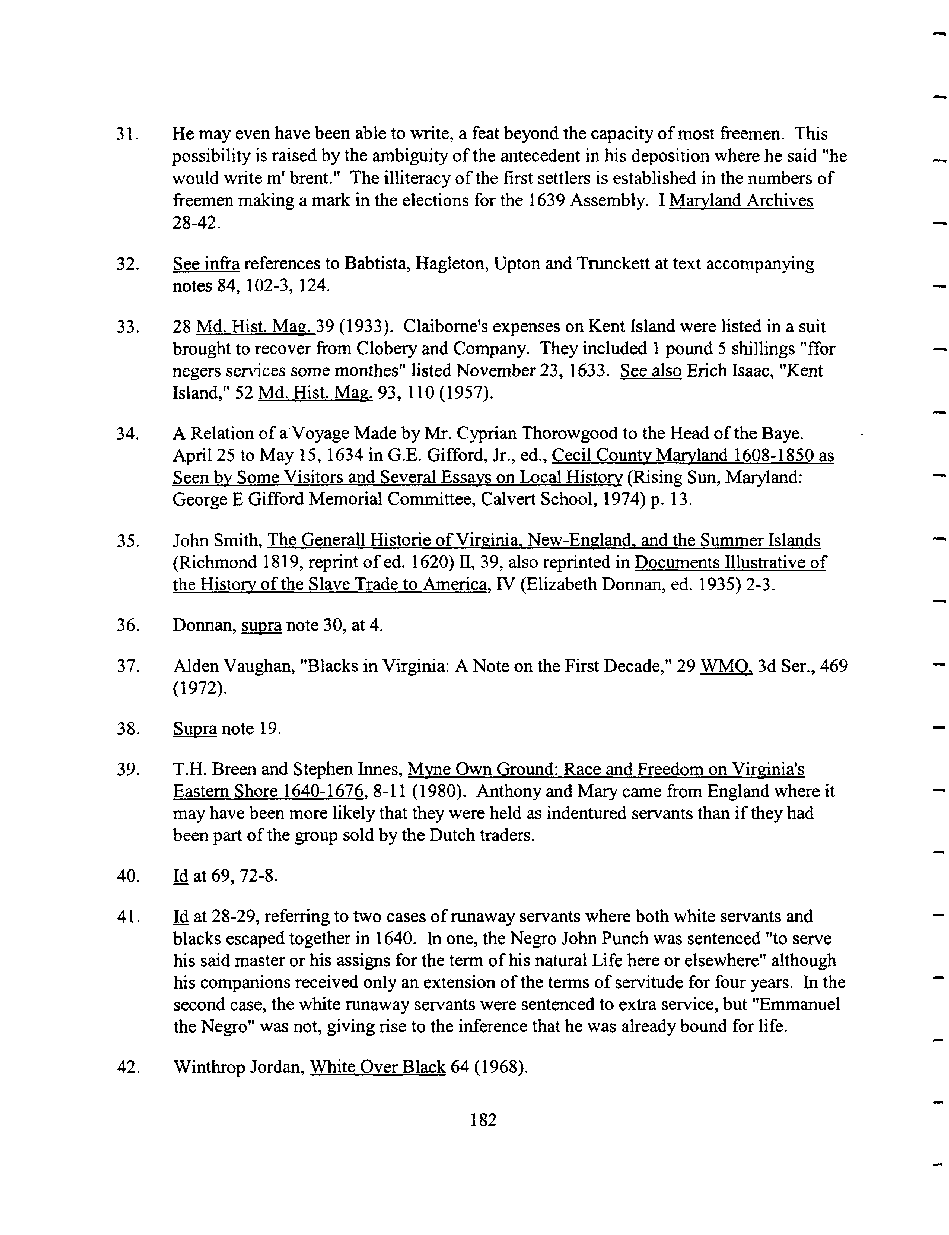|
31. He may even have been able to write, a feat beyond the capacity of most freemen. This
possibility is raised by the ambiguity of the antecedent in his deposition where he said "he
would write mr brent." The illiteracy of the first settlers is established in the numbers of
freemen making a mark in the elections for the 1639 Assembly. I Maryland Archives
28-42.
32. See infra references to Babtista, Hagleton, Upton and Trunckett at text accompanying
notes 84, 102-3, 124.
33. - 28 Md. Hist. Mag. 39 (1933). Claiborne's expenses on Kent Island were listed in a suit
brought to recover from Clobery and Company. They included 1 pound 5 shillings "ffor
negers services some monthes" listed November 23, 1633. See also Erich Isaac, "Kent
Island," 52 Md. Hist. Mag. 93, 110 (1957).
34. A Relation of a Voyage Made by Mr. Cyprian Thorowgood to the Head of the Baye.
April 25 to May 15, 1634 in G.E. Gifford, Jr., ed., Cecil County Maryland 1608-1850 as
Seen by Some Visitors and Several Essays on Local History (Rising Sun, Maryland:
George E Gifford Memorial Committee, Calvert School, 1974) p. 13.
35. John Smith, The Generall Historic of Virginia, New-England, and the Summer Islands
(Richmond 1819, reprint of ed. 1620) n, 39, also reprinted in Documents Illustrative of
the History of the Slave Trade to America. IV (Elizabeth Donnan, ed. 1935) 2-3.
36. Donnan, supra note 30, at 4.
37. Alden Vaughan, "Blacks in Virginia: A Note on the First Decade," 29 WMO. 3d Ser., 469
(1972).
38. Supra note 19.
39. T.H. Breen and Stephen Innes, Myne Own Ground: Race and Freedom on Virginia's
Eastern Shore 1640-1676. 8-11 (1980). Anthony and Mary came from England where it
may have been more likely that they were held as indentured servants than if they had
been part of the group sold by the Dutch traders.
40. Id at 69, 72-8.
41. Id at 28-29, referring to two cases of runaway servants where both white servants and
blacks escaped together in 1640. In one, the Negro John Punch was sentenced "to serve
his said master or his assigns for the term of his natural Life here or elsewhere" although
his companions received only an extension of the terms of servitude for four years. In the
second case, the white runaway servants were sentenced to extra service, but "Emmanuel
the Negro" was not, giving rise to the inference that he was already bound for life.
42. Winthrop Jordan, White Over Black 64 (1968).
182
�
|

